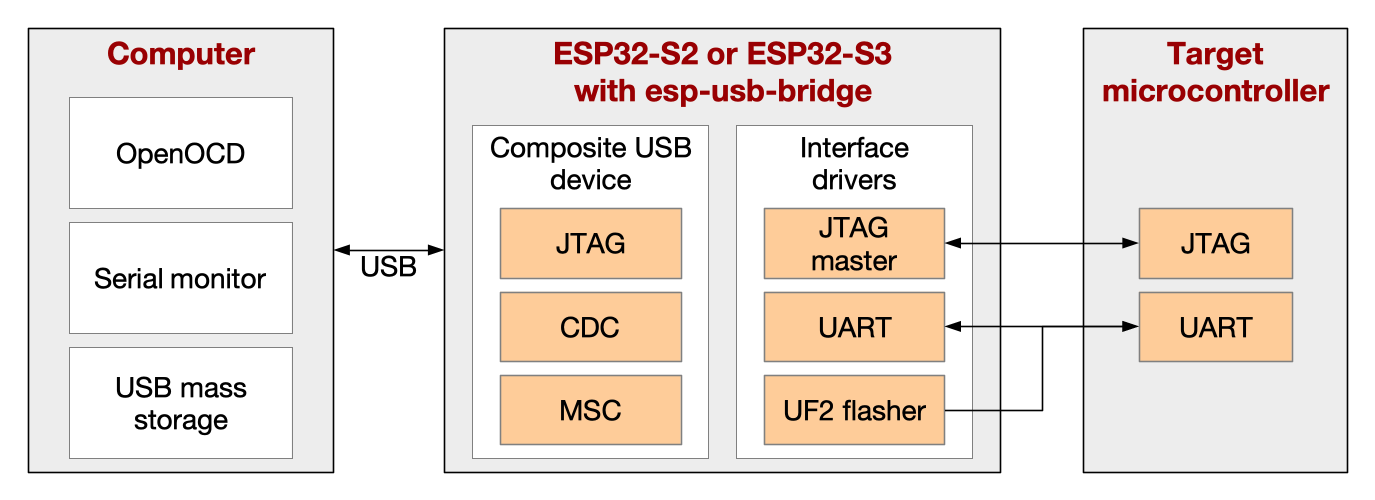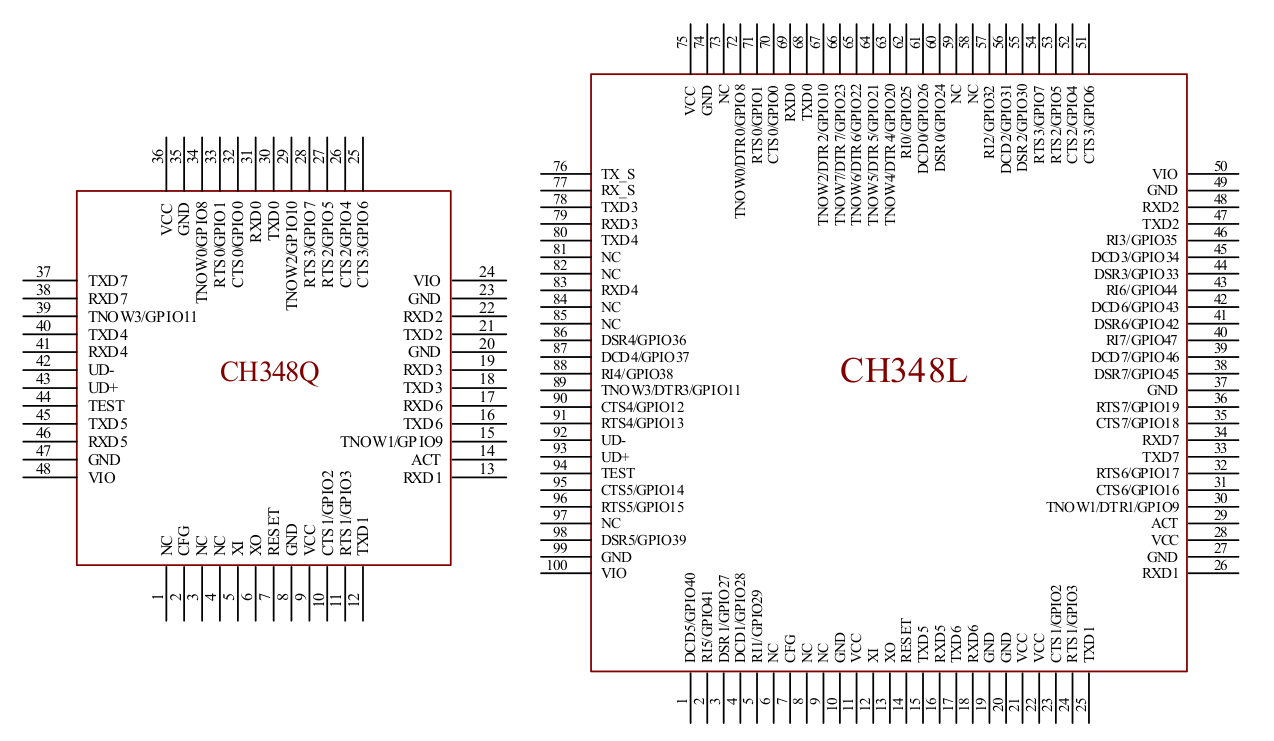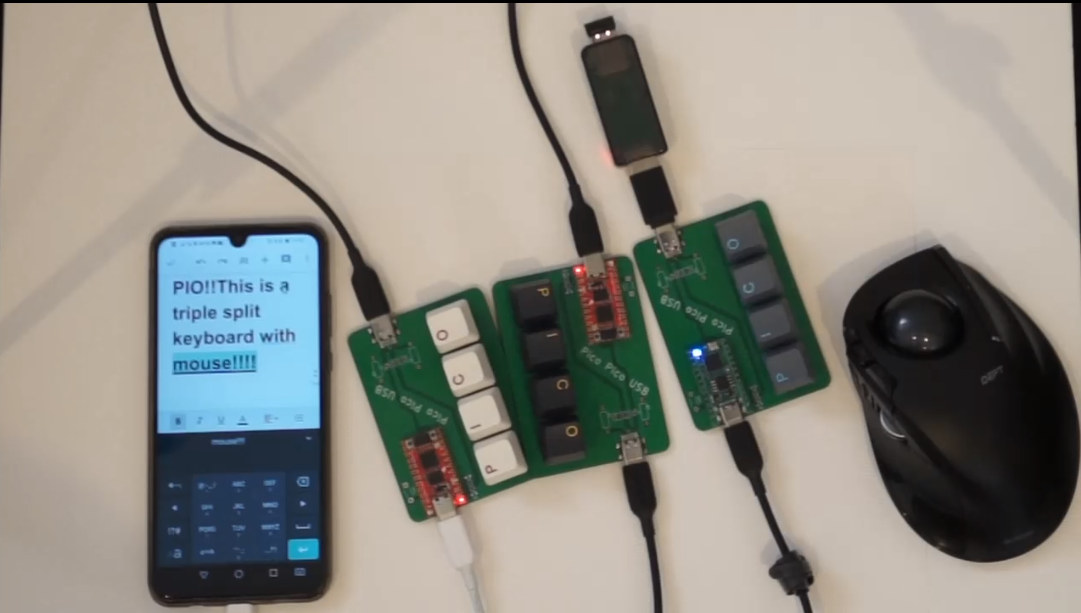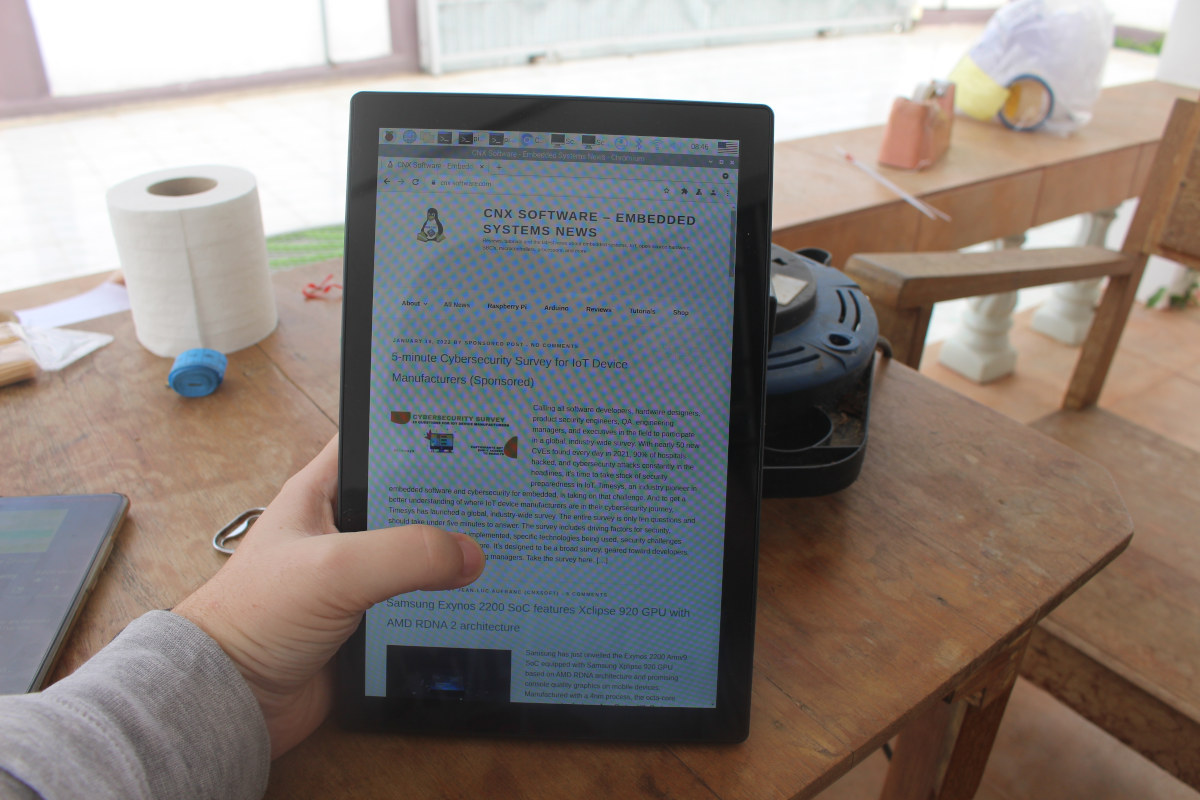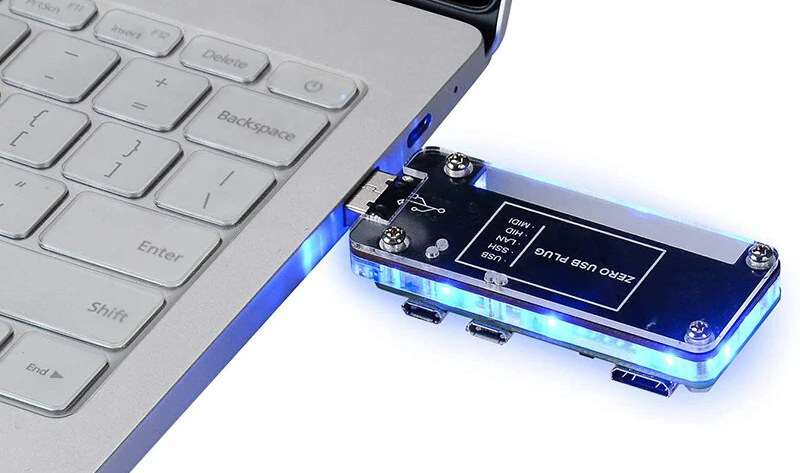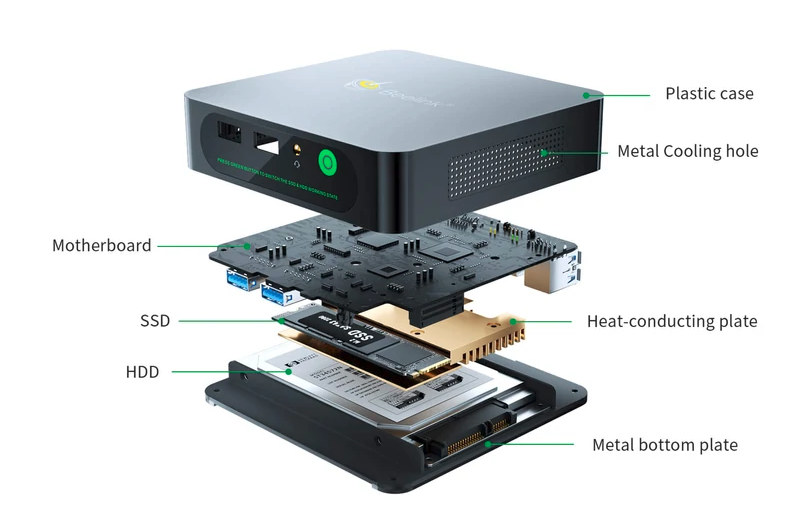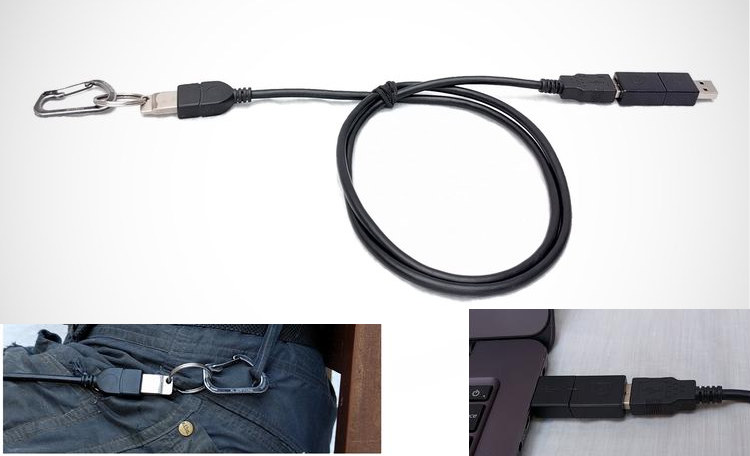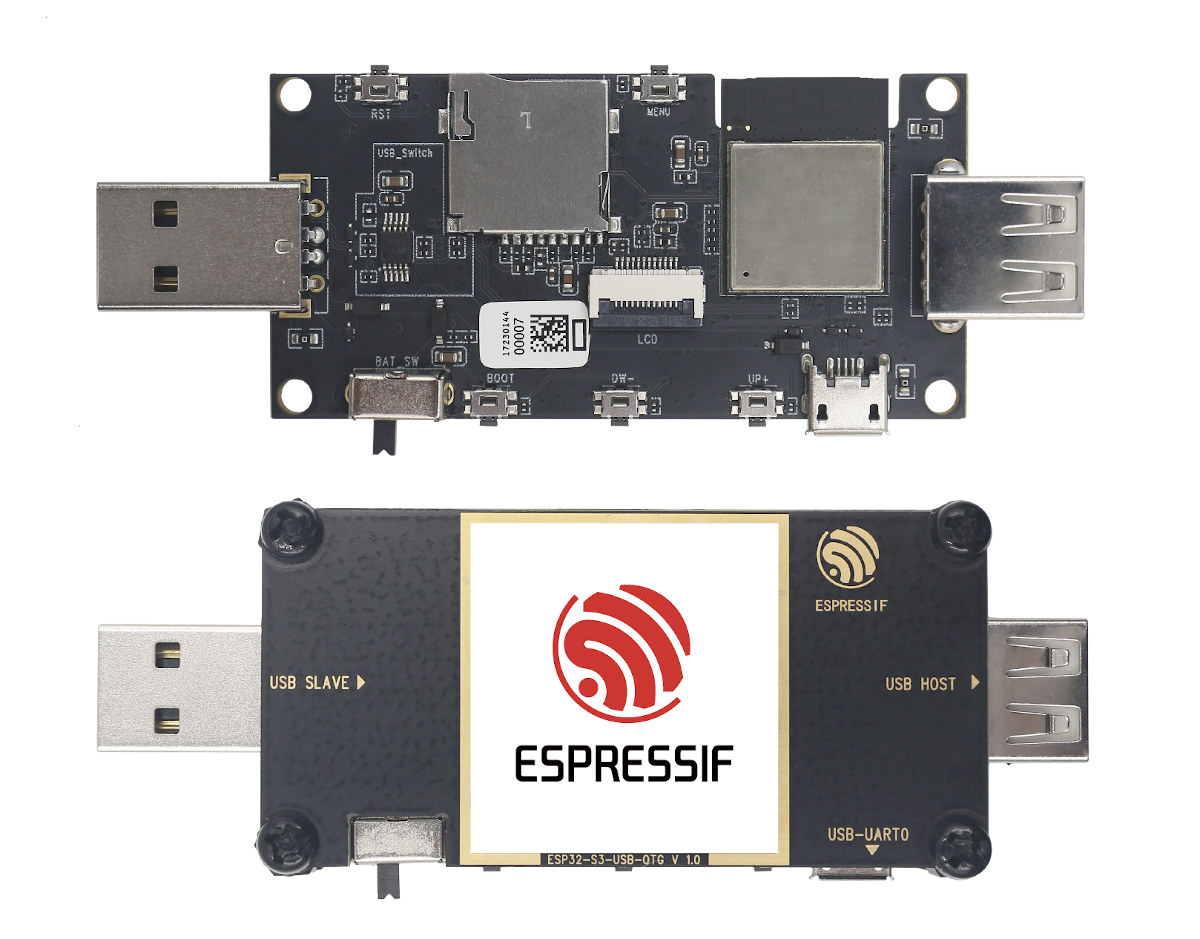Espressif’s ESP USB Bridge is a project based on the ESP-IDF that leverages ESP32-S2 or ESP32-S3 USB interface to use the board as a USB to UART or USB to JTAG debug board. It can serve as a substitute for USB to TTL debug boards based on CH340 or CP2104 for instance, be used with OpenOCD in JTAG bridge mode, and also flash UF2 firmware file to the target board. As just mentioned, there are three main use cases: Serial bridge mode with a terminal program or a firmware flashing tool like esptool. In that case, it just works like your typical USB to TTL debug board JTAG bridge mode for JTAG debugging with OpenOCD, and if the target board is based on ESP32, you can use openocd-esp32 project Mass storage device where the board can be accessed by a file manager on the host computer. One of the specific […]
WCH CH348 is an 8-port USB to serial chip with up to 48 GPIOs
If you need to control or debug multiple devices over UART devices, you’d be glad to learn WCH has just launched the CH348 USB to serial chip with eight UART ports. Two models are offered CH348L in an LQFP100 package and CH348Q in an LQFP48 package. Both offer eight UART interfaces, but CH348L comes with more CTS/RTS and DTR/hardware flow control signals, as well as DTR, DCD, RI signals, and support for independent voltage for I/Os. CH348 key features specifications: High-speed USB device interface Hardware full-duplex serial port, integrated independent transmit-receive buffer Baud rate varies from 1200bps to 6Mbps. The serial ports support 8 data bits, odd, even, and none parity, 1/2 stop bit. Each serial port comes with a 2048-byte receiving FIFO and a 1024-byte transmitting FIFO. Signals RTS, DTR, DCD, RI, DSR, and CTS supported for hardware flow control The MODEM interface signal pins and 485 transmit and […]
Raspberry Pi RP2040 gains an extra USB port through PIO’s (programmable I/Os)
The Raspberry Pi RP2040 specifications only list one USB 1.1 Host/Device hardware interface, but developer’s Sekigon Gonnoc decided to leverage the microcontroller’s programmable I/Os (PIO) to add an extra USB port that also works in host or device mode. While the C library is still supposed to be a work in progress Sekigon implemented full-speed (12 Mbps) and slow-speed (1.5Mbps) host, full-speed device, USB hub, and multi-port support. There’s even a demo with three “Pico Pico USB” keyboards acting as USB hubs and HID plus a wireless mouse to show the results. The implementation uses one PIO for the USB transmitter using 22 instructions and one state machine and another PIO for the USB receiver using 31 instructions and two state machines, as well as one 1ms loop timer for the host, and one PIO interrupt for the receiver. You’ll find the code to implement the extra USB port on […]
10.1-inch RPI All-in-One PC review with Raspberry Pi 4
A couple of months ago I received “RPI All-in-One”, a 10.1-inch touchscreen display for Raspberry Pi boards, listed the specifications, checked out the package content, installed a Raspberry Pi 4 inside the display before booting my new all-in-one (AiO) PC successfully. I’ve now had time to spend more time with the PC/display and see how it performs under various conditions. I also tested HDMI and USB-C input features with a laptop and mini PC. Fan or fanless operation? After updating Raspberry Pi OS, I ran sbc-bench.sh script together with rpi-monitor to see how the Raspberry Pi 4 with 1GB RAM would perform under load with the (noisy) fan enabled.
|
1 2 3 4 5 6 7 8 9 10 11 12 13 14 15 16 17 18 19 20 21 22 23 24 25 26 27 28 29 30 31 32 33 34 35 36 37 38 39 40 41 42 43 44 45 46 47 |
sbc-bench v0.9.1 Installing needed tools. This may take some time. Done. Checking cpufreq OPP. Done (results will be available in 11-15 minutes). Executing tinymembench. Done. Executing OpenSSL benchmark. Done. Executing 7-zip benchmark. Done. Checking cpufreq OPP. Done (17 minutes elapsed). perl: warning: Setting locale failed. perl: warning: Please check that your locale settings: LANGUAGE = (unset), LC_ALL = (unset), LC_ADDRESS = "en_GB.UTF-8", LC_NAME = "en_GB.UTF-8", LC_MONETARY = "en_GB.UTF-8", LC_PAPER = "en_GB.UTF-8", LC_IDENTIFICATION = "en_GB.UTF-8", LC_TELEPHONE = "en_GB.UTF-8", LC_MEASUREMENT = "en_GB.UTF-8", LC_TIME = "en_GB.UTF-8", LC_NUMERIC = "en_GB.UTF-8", LANG = (unset) are supported and installed on your system. perl: warning: Falling back to the standard locale ("C"). It seems neither throttling nor frequency capping has occured. Memory performance: memcpy: 2595.9 MB/s (0.8%) memset: 3398.3 MB/s (2.7%) 7-zip total scores (3 consecutive runs): 5556,5650,5565 OpenSSL results: type 16 bytes 64 bytes 256 bytes 1024 bytes 8192 bytes 16384 bytes aes-128-cbc 61981.49k 76335.40k 82773.25k 84199.42k 84355.75k 84393.98k aes-128-cbc 62224.25k 76254.36k 82779.39k 84461.91k 84757.16k 84825.43k aes-192-cbc 55900.34k 67052.89k 71500.80k 73121.11k 73362.09k 73203.71k aes-192-cbc 55869.41k 66963.52k 71835.14k 72934.74k 73471.32k 73465.86k aes-256-cbc 50541.63k 59834.26k 63387.14k 64413.70k 64634.88k 64760.49k aes-256-cbc 50646.47k 59735.02k 63384.92k 64461.14k 64648.53k 64629.42k Full results uploaded to http://ix.io/3MfY. In case this device is not already represented in official sbc-bench results list then please consider submitting it at https://github.com/ThomasKaiser/sbc-bench/issues with this line: | RPi 4 Model B Rev 1.1 / BCM2711 rev B0 | 1500 MHz | 5.10 | Bullseye armhf | 5590 | 62100 | 64690 | 2600 | 3400 | - | [http://ix.io/3MfY](http://ix.io/3MfY) | |
No throttling was detected, and the temperature never exceeded 56°C in a room with an ambient temperature of 26°C. I then disconnect the fan, but it turns out the fan can also be easily disabled in the OSD menu […]
USB add-on boards leverage Raspberry Pi Zero test pads, USB Gadget mode
I’ve just come across a few USB boards that take advantage of the Raspberry Pi Zero (W) test pads to add one or more USB Type-A ports to the board without soldering. The first one is “Catda Raspberry Pi zero WH USB expansion board” which I found on Banggood for $9.99. It’s a kit that ships with a USB Zero plug expansion module, an acrylic “isolation protection cover”, an acrylic transparent light diffraction protection cover plus M2.5 screws and nuts for mounting it to the Raspberry Pi Zero WH board, but it should work any Raspberry Pi Zero including the new Raspberry Pi Zero 2 W board since it relies on pogo pin to connect the four test pads for USB data and power, and those are in the same position for all Pi Zero boards. You can then plug it into a laptop or computer to power the board […]
Beelink Expand F USB-C dock takes M.2 SSD and 2.5-inch SATA drive
Beelink has previously introduced USB docks with the Expand X smartphone dock and Expand M with an SSD. The company’s latest Beelink Expand F USB-C dock looks really like a mini PC from the outside with the usual USB, HDMI, Ethernet, and audio ports, and it can also be fitted with an M.2 2280 SATA SSD and/or a 2.5-inch SATA drive. It can be useful to add PC-like connectivity to a smartphone or add additional storage to a laptop without cluttering your desk with multiple USB drives, and/or potentially saving some USB ports on the host machine. Beelink Expand F specifications: Storage Options No storage, i.e. bring your own SATA drive(s) via M.2 socket up to 440 MB/s and/or 2.5-inch SATA bay 512GB SATA III M.2 SSD 512GB SATA III M.2 SSD plus 1TB SATA HDD Video Output – 2x HDMI ports up to 4K resolution Audio – 3.5mm audio […]
BusKill USB kill cord protects data on Linux, Windows, Mac OS devices
Data is can be extremely valuable, so Alt Shift designed the BusKill USB kill cord that will automatically execute a user-configurable trigger when your machine is physically separated from you. It can be especially useful to journalists and activists that may get their devices seized by the government, crypto traders, military personnel, or travelers with sensitive data. BusKill is basically just a USB cable attached to the computer via a magnetic breakaway and to the user, for instance to a belt loop, and that will trigger a configurable Python script if the cable is detached while BusKill software is armed. BusKill is made up of four hardware components with a custom magnetic breakaway, a standard USB extension cable, and a USB thumb drive attached to a carabiner via a keyring. I could not find a clear explanation for the USB thumb drive in this system, but I can only assume […]
Develop USB Host and Device applications with ESP32-S3-USB-OTG board
ESP32-S series chips like ESP32-S2 and ESP32-S3 come with a USB OTG interface, and Espressif unveiled the ESP32-S3-USB-OTG board last September in a post entitled “ESP-USB: Espressif’s Wireless Communication Solution“, where they mostly focused on USB code samples with documentation in Chinese only and provided few details about the board itself. But I browsed the company’s official Aliexpress store earlier this week, and I noticed ESP32-S3-USB-OTG board was up for sale for $35 plus shipping, with additional information now available, so let’s have a closer look. ESP32-S3-USB-OTG board specifications: Wireless module – ESP32-S3-MINI-1-N8 module with ESP32-S3 dual-core Xtensa LX7 processor with WiFi 4 and Bluetooth 5.0 connectivity, 8MB QSPI flash Storage – MicroSD card socket Display – 1.3-inch color LCD USB 1x Full-speed USB host port 1x Full-speed USB slave port 1x Micro USB port for debugging (UART console) Expansion – 14 pads with 6x GPIO, JTAG, 3.3V and GND […]


